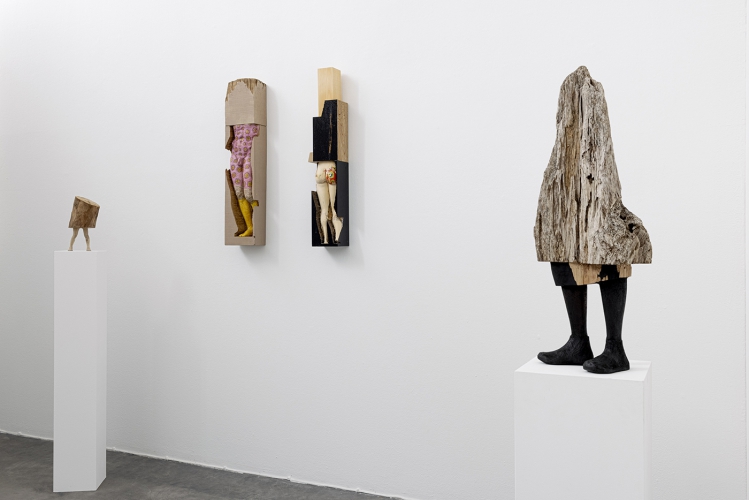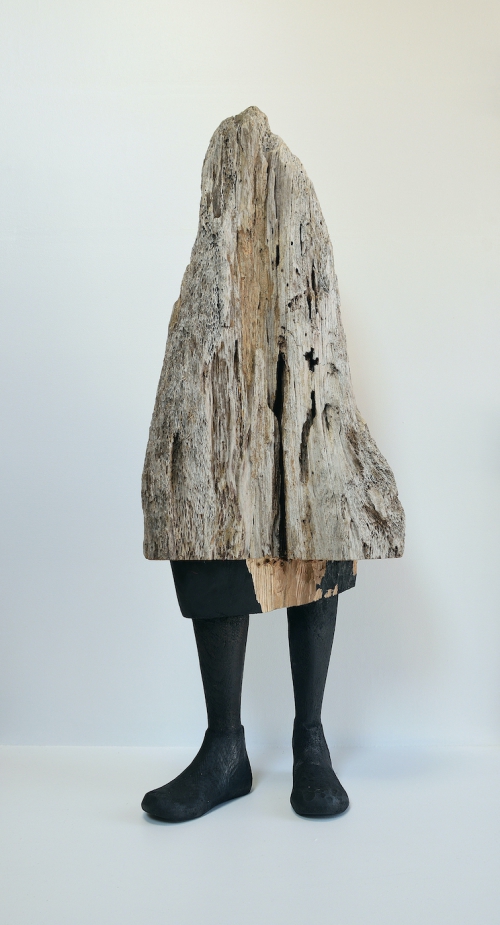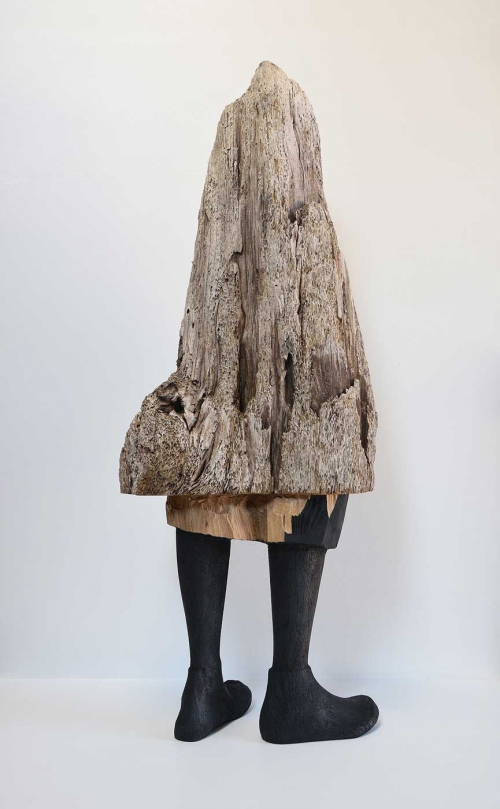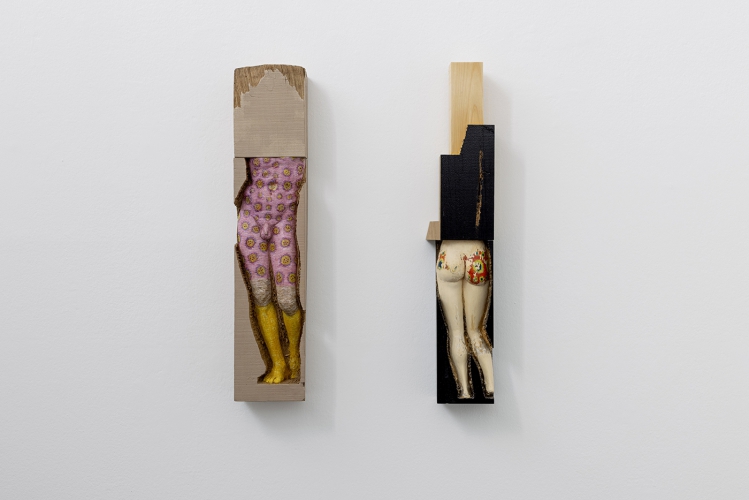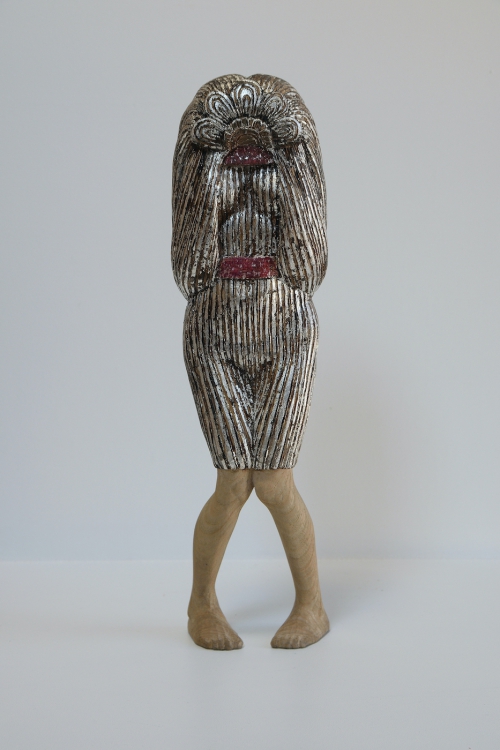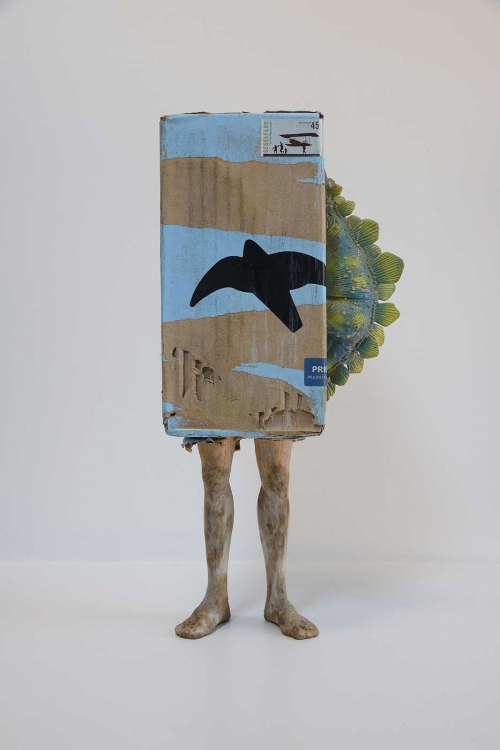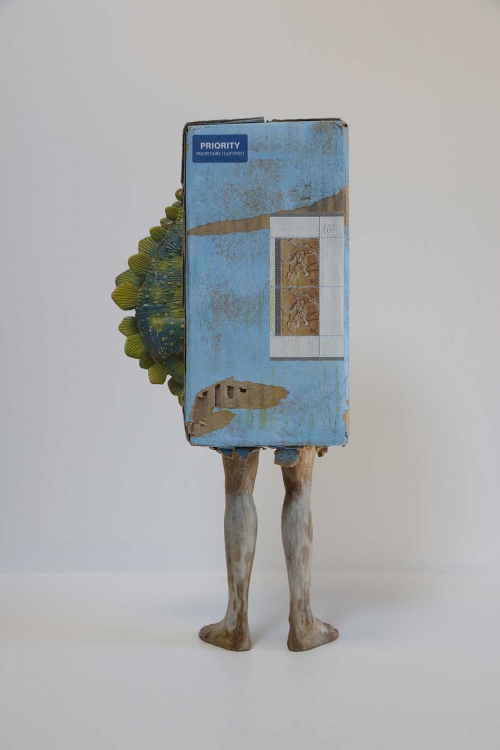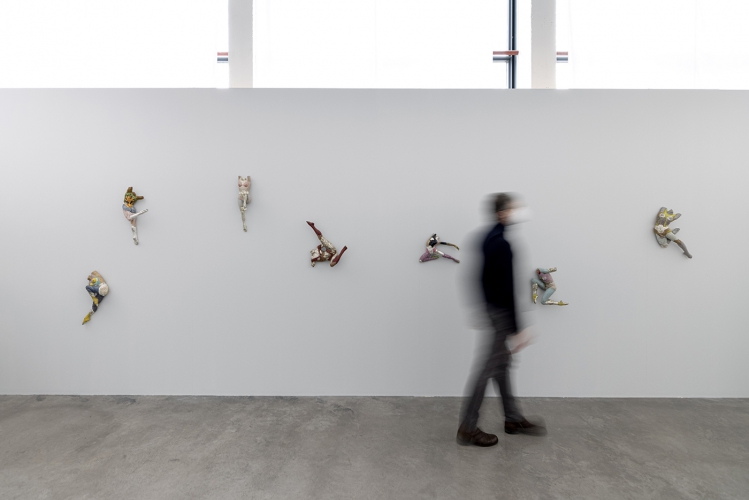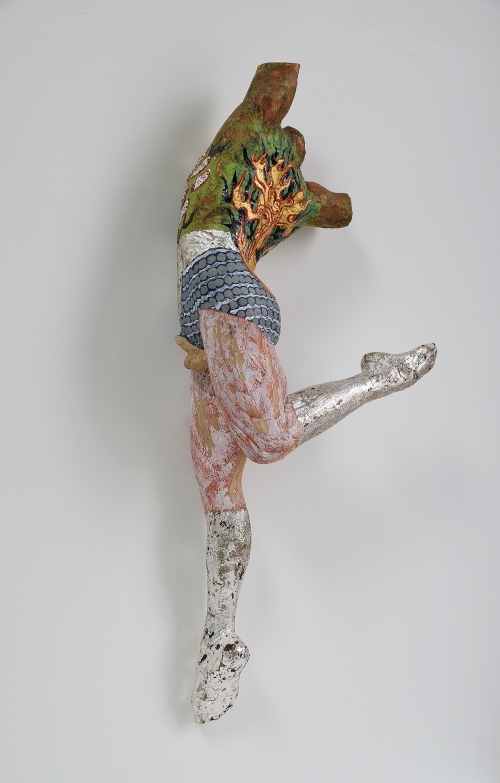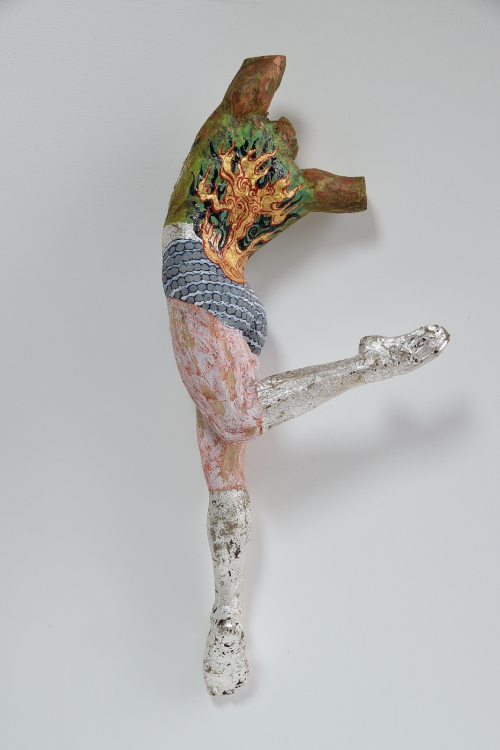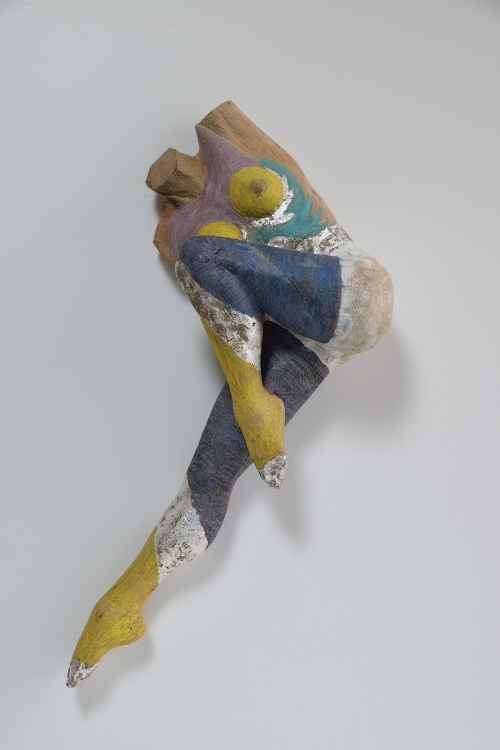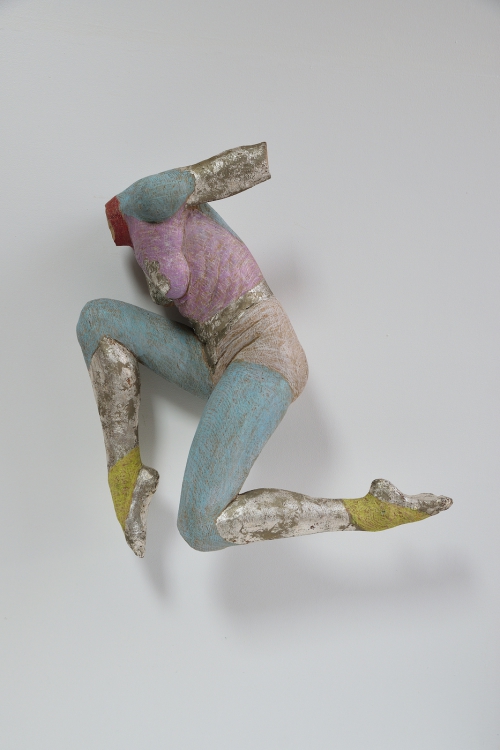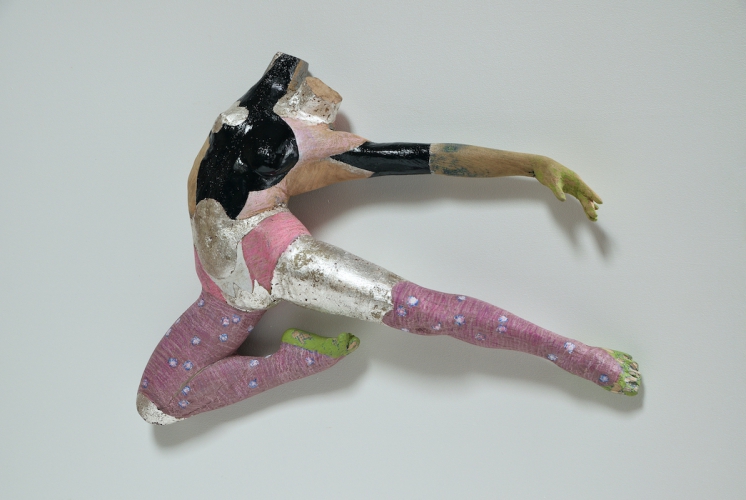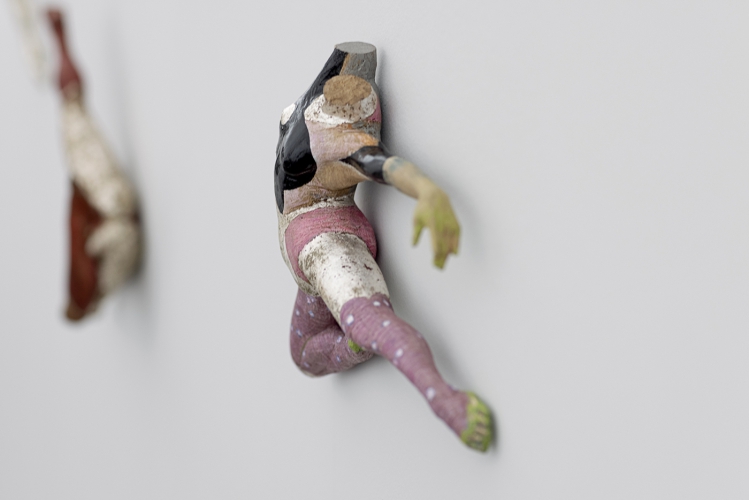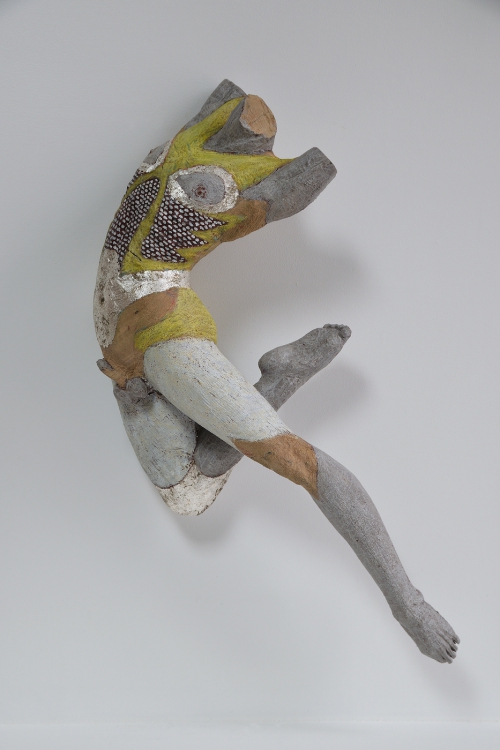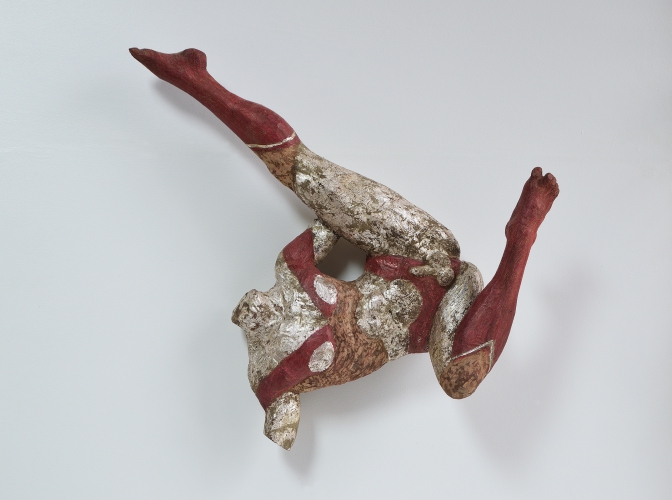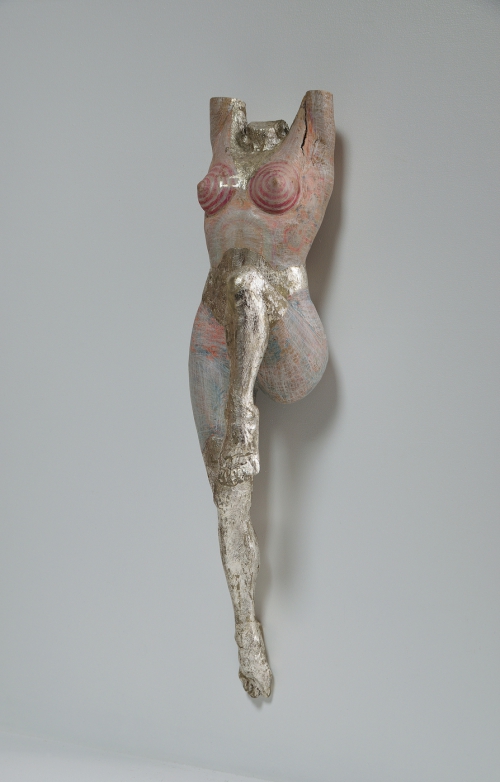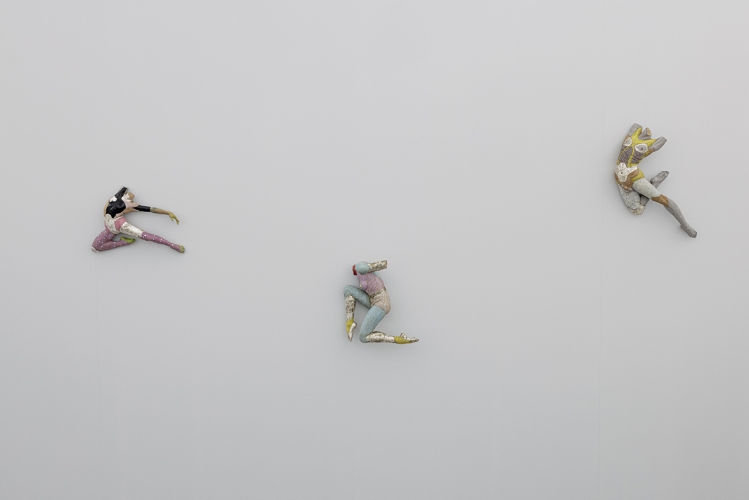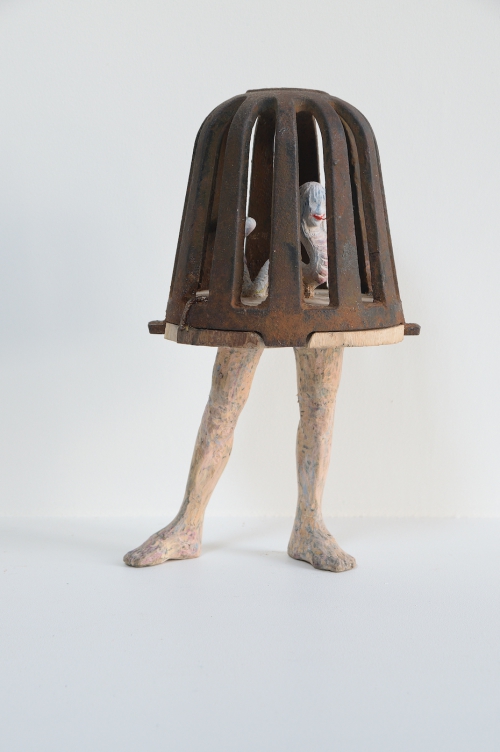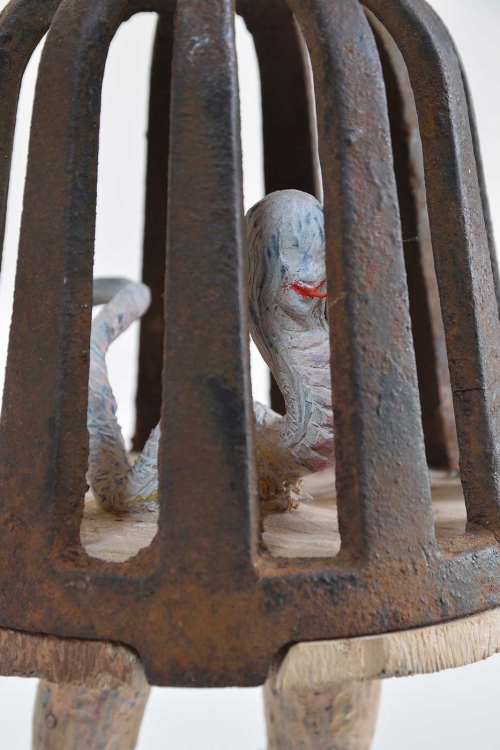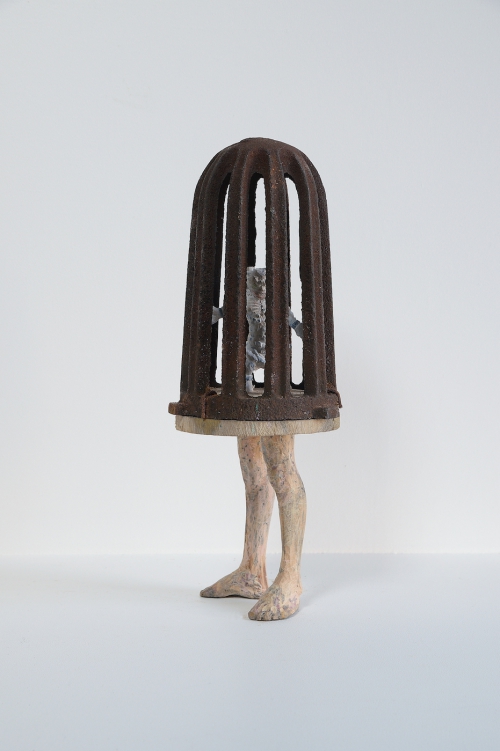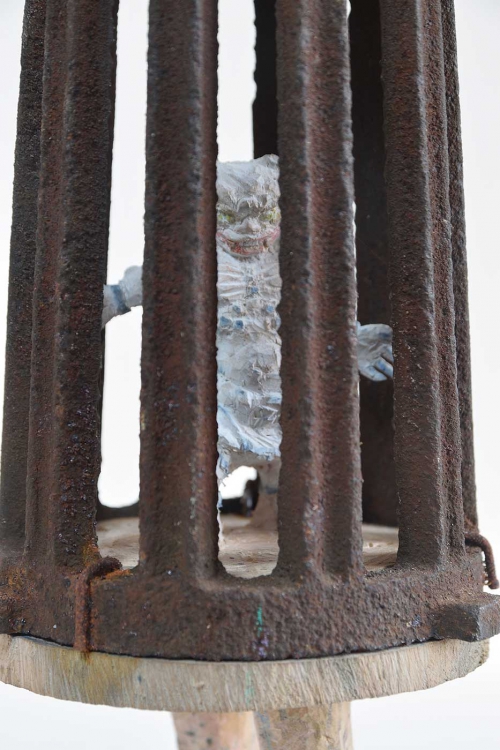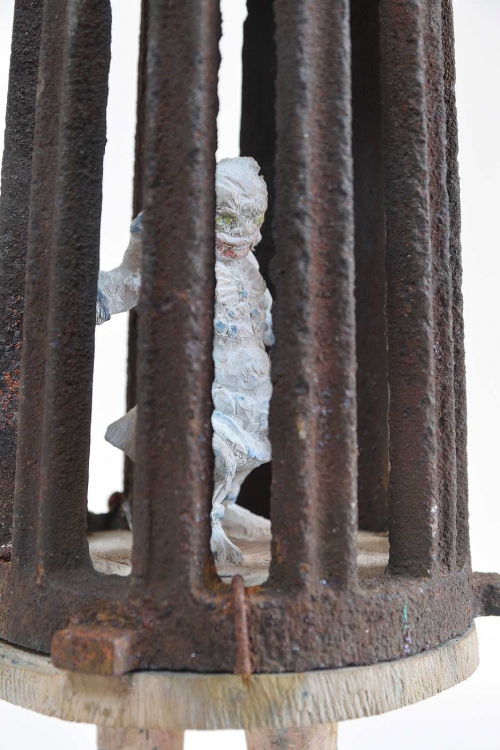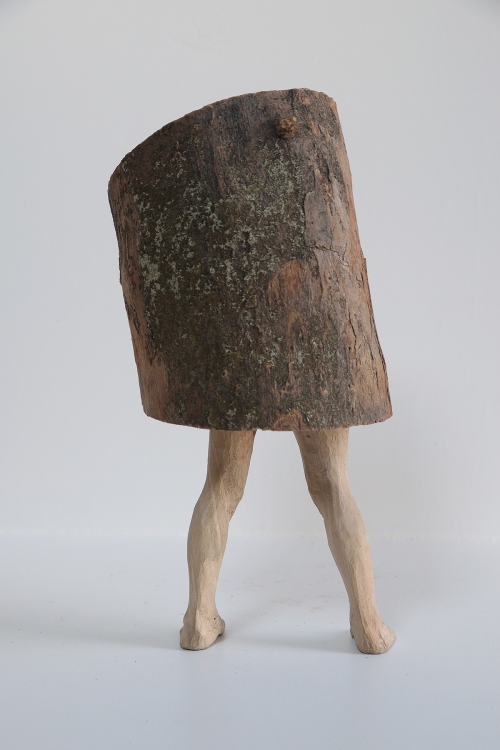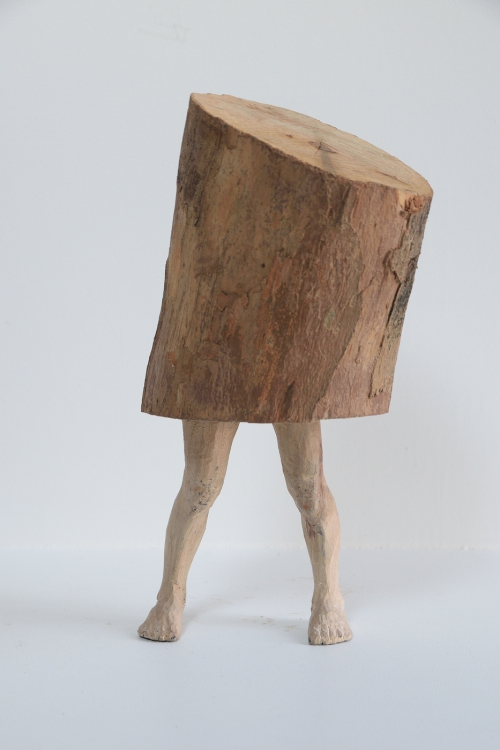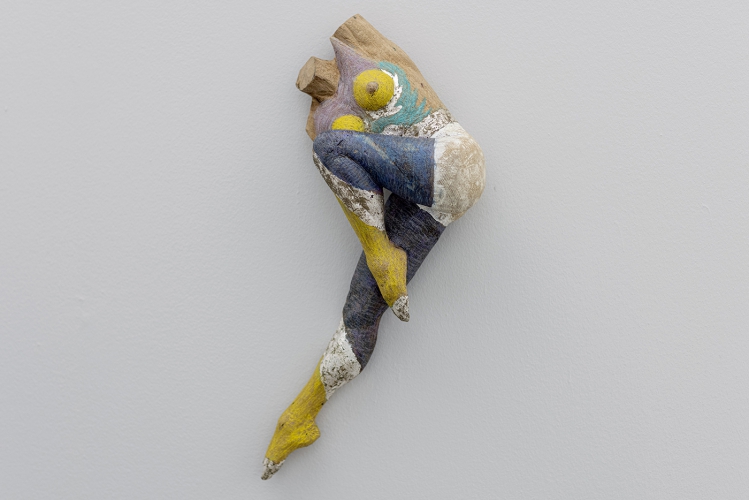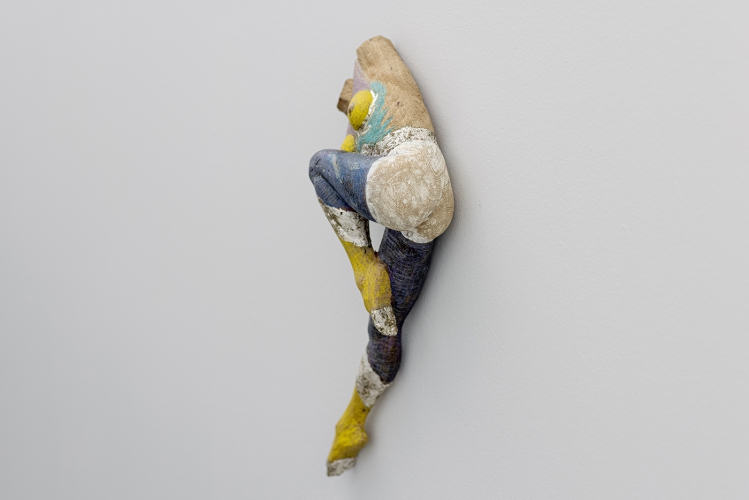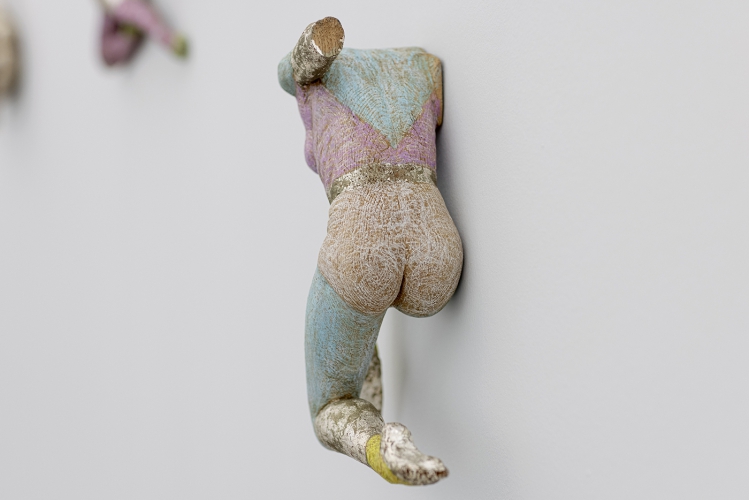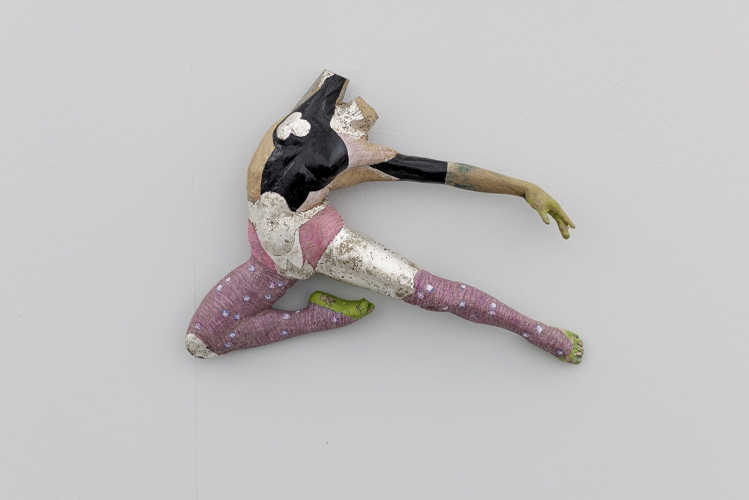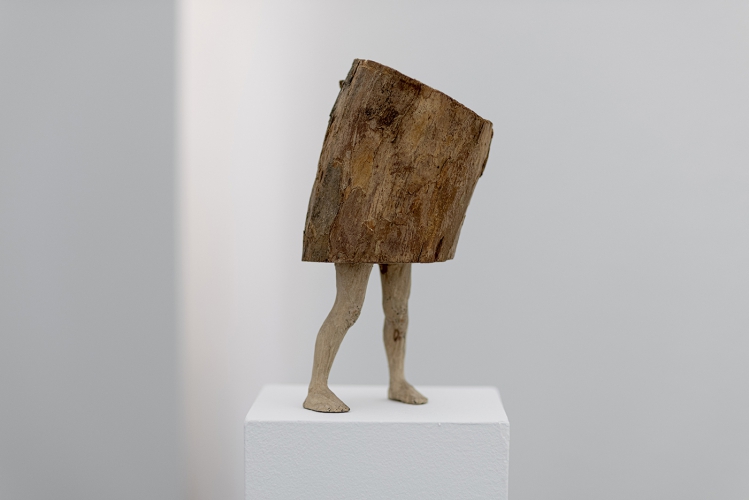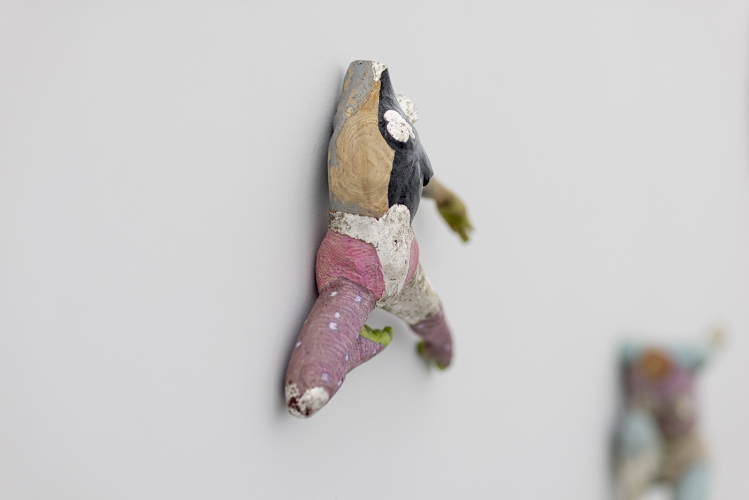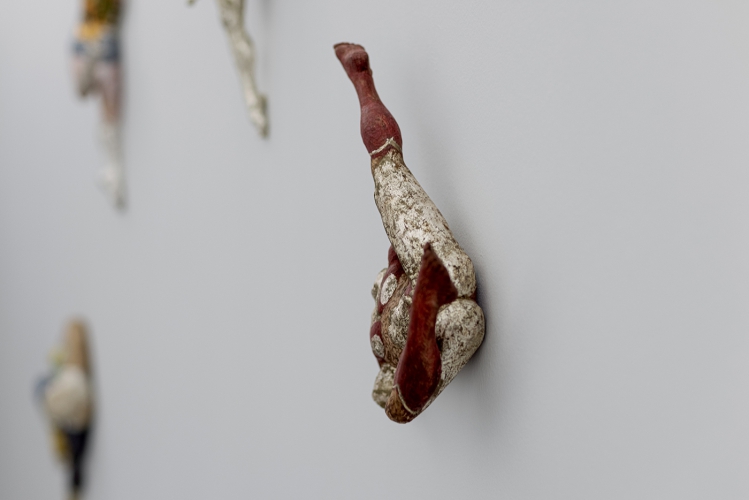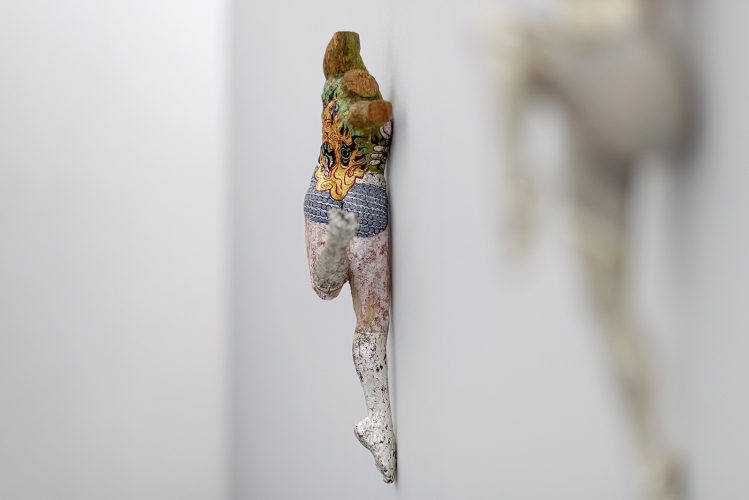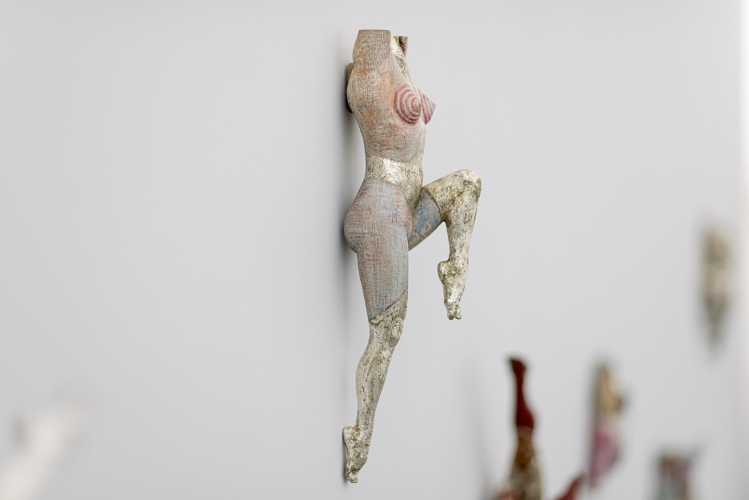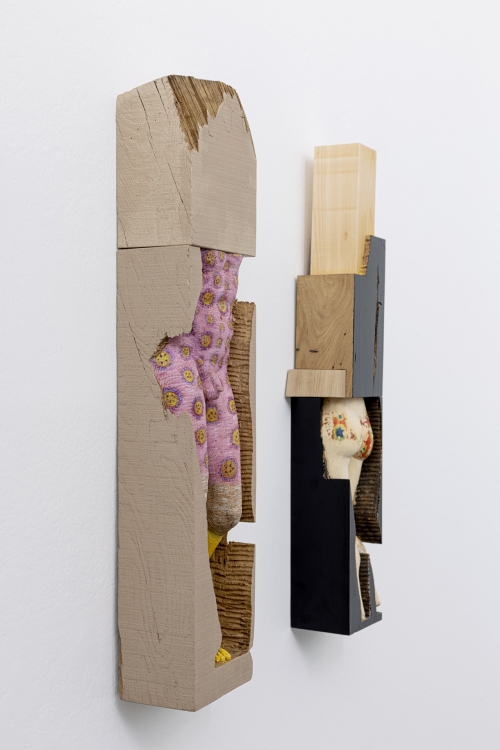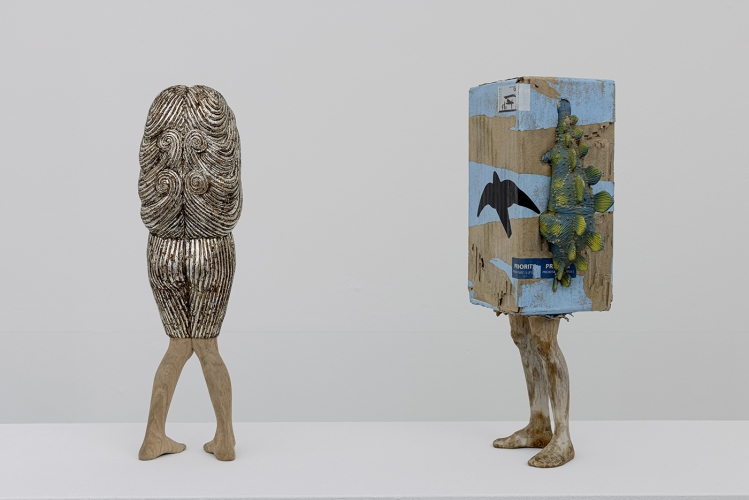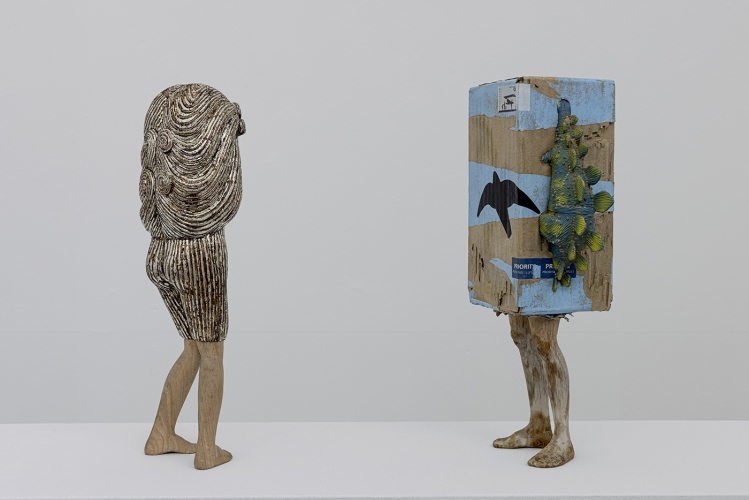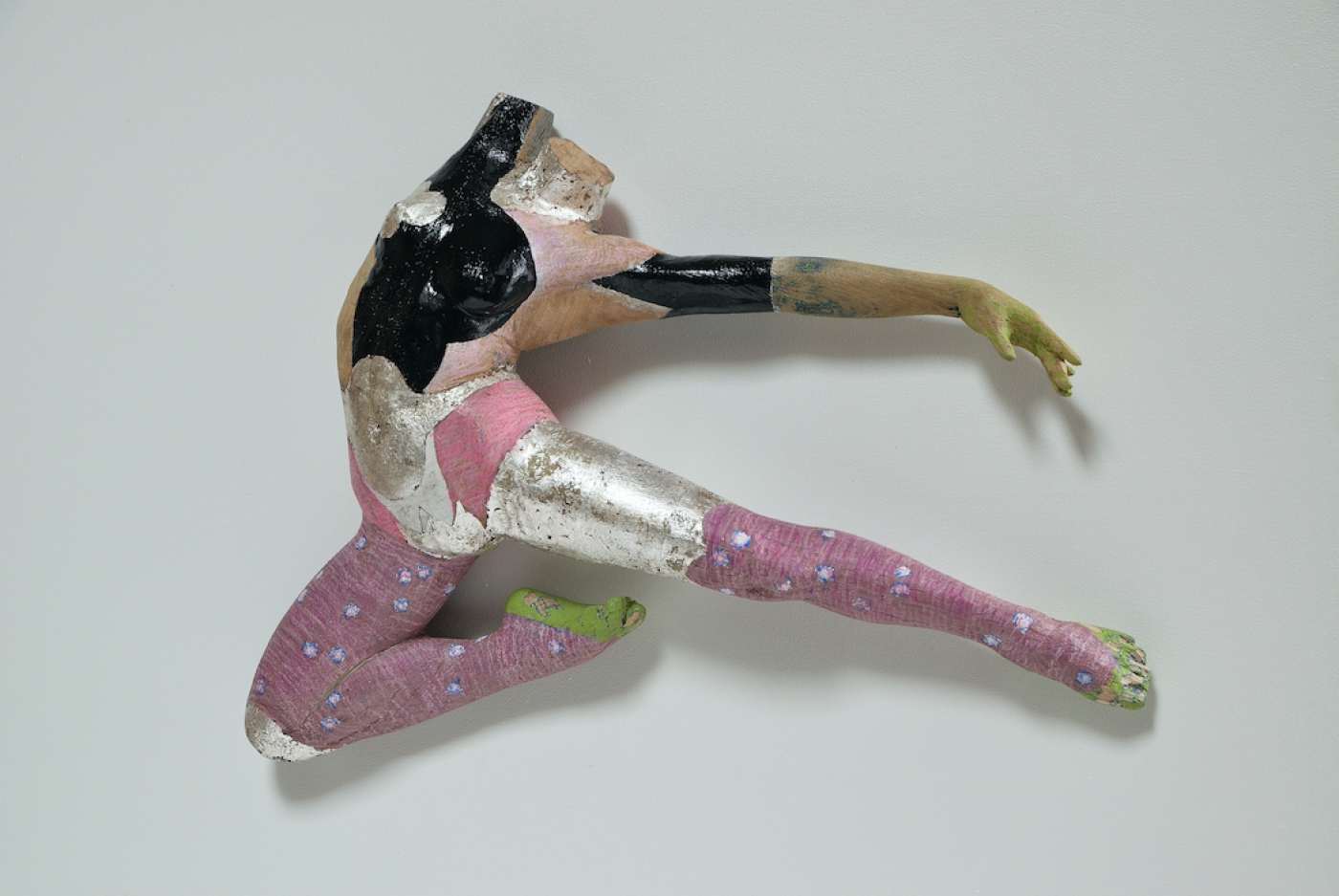
09.02. — 15.04.2021
Akhihiro Higuchi - VERY, VERY STRONG
PRICE LIST (In German: email info@mikikosatogallery.com for prices)
Very, Very Strong - Text by Jan-Frederik Rust (In German)
The exhibition Very, Very Strong marks a turning point in the work of the Japanese artist Akihiro Higuchi. For the first time, the human body, which has so far been largely hidden from our observing gaze, takes centre stage, displacing insects, reptiles and two- and four-legged mammals such as moths, snakes or beavers, which usually play the main roles in the contemporary sculptor's work. In absurdly comic gestures such as dressing squirrels or monkeys in turtlenecks and caps made of colourful cotton or fine lacquer painting in the style of the old masters on deep black shiny chitinous carapaces of prepared stag beetles, Higuchi playfully exposed man's ambivalent relationship to animals, or more precisely, his questionable need to constantly want to reshape nature according to his ideals. For Very, Very Strong, Higuchi now returns to other familiar themes - his fascination with Greek sculpture, peculiarities of Japanese folklore and popular superheroes of his childhood - to use these different categories to reflect anew on human existence in times of Corona. It is remarkable that the seriousness of the subject matter has not had a detrimental effect on the unique charm and humour of his works. Consequently, the curious, whimsical, even ghostly-looking hybrid creatures in the current exhibition present themselves as symbols of a time that undoubtedly feels no less strange and threatening.
A childlike, playful examination of the beauty ideals of classical sculpture is the starting point for various series of works such as Ryūboku (Driftwood), Very, Very Strong or Kenzai (Squared timber). For the latter, Higuchi carved unfinished versions of the Venus of Cyrene and the Hermes of Olympia into pieces of wood reminiscent of oversized building blocks and then painted them with the help of coloured pencils in order to heighten the erotic potential of the female and male stature. The athletic bodies of the series Very, Very Strong reveal a climax of this endeavour. Here, unlike in Kenzai's work, the figures of the gods are not half-finished reliefs, but fully three-dimensional bodies set in form. The dynamic poses, rather than the resting contrapposto, are reminiscent of the elegant movement patterns of ballet and the martial arts of the Far East. In the colour design of the figures, Higuchi makes direct reference to the body-emphasising costumes of Japanese superheroes such as Ultraman (an icon of Japanese pop culture), who has been protecting the earth from the threat of gigantic monsters on the television screen and the cinema screen since the mid-1960s. In looking at the characters, Japanese sci-fi aesthetics of yesterday inevitably merge with the beauty ideals of Greek antiquity. The effortlessness with which Higuchi synthesises these cultural products, separated from each other by millennia, is at first astonishing and yet illuminating. The attributes of Japanese as well as Western superheroes, such as supernatural strength and speed or special heat rays are examined and parallels and distinctions are made with many super powers being borrowed directly from ancient models such as Hercules, Hermes and Zeus. Since the Greek deities are known to have human forms, the contemplation of their ideal-typical bodies is inevitably always also an act of self-reflection.
Sculptures such as Driftwood and Hair Woman, on the other hand, tell of the Japanese belief in the soulfulness of all things in nature as well as of the unwavering strength of women. Themes such as animism but also pareidolia, i.e. the tendency of people to recognise faces or objects in arbitrary patterns (think of the Rorschach test), have already been treated artistically by Higuchi in the past. Old wood is his preferred working material today, as it was then. According to Japanese folklore, it regularly serves as a refuge for good and evil spirits, who particularly like to take up residence in antiquarian everyday objects. Interestingly, the mood of these supernatural beings is determined by the care or carelessness with which the objects have been used by their owners over decades. Higuchi gives the old wood human, animal or even ghostly features by means of refined sculptural interventions in the material or the addition of limbs, whose astonishingly real impression of liveliness and individual character is a source of amazement.
Other works, above all the Schachtelmann, prove to be sensitive allegories that give expression to ingenuity and constancy, but also to people's fears and worries in the face of the ongoing pandemic. The title of the current exhibition, however, leaves no doubt as to the outcome of this still ongoing battle between good and evil. For fortunately, the artist assures us with his new works, man is very, very strong.
Very, Very Strong - Text by Jan-Frederik Rust (In German)
The exhibition Very, Very Strong marks a turning point in the work of the Japanese artist Akihiro Higuchi. For the first time, the human body, which has so far been largely hidden from our observing gaze, takes centre stage, displacing insects, reptiles and two- and four-legged mammals such as moths, snakes or beavers, which usually play the main roles in the contemporary sculptor's work. In absurdly comic gestures such as dressing squirrels or monkeys in turtlenecks and caps made of colourful cotton or fine lacquer painting in the style of the old masters on deep black shiny chitinous carapaces of prepared stag beetles, Higuchi playfully exposed man's ambivalent relationship to animals, or more precisely, his questionable need to constantly want to reshape nature according to his ideals. For Very, Very Strong, Higuchi now returns to other familiar themes - his fascination with Greek sculpture, peculiarities of Japanese folklore and popular superheroes of his childhood - to use these different categories to reflect anew on human existence in times of Corona. It is remarkable that the seriousness of the subject matter has not had a detrimental effect on the unique charm and humour of his works. Consequently, the curious, whimsical, even ghostly-looking hybrid creatures in the current exhibition present themselves as symbols of a time that undoubtedly feels no less strange and threatening.
A childlike, playful examination of the beauty ideals of classical sculpture is the starting point for various series of works such as Ryūboku (Driftwood), Very, Very Strong or Kenzai (Squared timber). For the latter, Higuchi carved unfinished versions of the Venus of Cyrene and the Hermes of Olympia into pieces of wood reminiscent of oversized building blocks and then painted them with the help of coloured pencils in order to heighten the erotic potential of the female and male stature. The athletic bodies of the series Very, Very Strong reveal a climax of this endeavour. Here, unlike in Kenzai's work, the figures of the gods are not half-finished reliefs, but fully three-dimensional bodies set in form. The dynamic poses, rather than the resting contrapposto, are reminiscent of the elegant movement patterns of ballet and the martial arts of the Far East. In the colour design of the figures, Higuchi makes direct reference to the body-emphasising costumes of Japanese superheroes such as Ultraman (an icon of Japanese pop culture), who has been protecting the earth from the threat of gigantic monsters on the television screen and the cinema screen since the mid-1960s. In looking at the characters, Japanese sci-fi aesthetics of yesterday inevitably merge with the beauty ideals of Greek antiquity. The effortlessness with which Higuchi synthesises these cultural products, separated from each other by millennia, is at first astonishing and yet illuminating. The attributes of Japanese as well as Western superheroes, such as supernatural strength and speed or special heat rays are examined and parallels and distinctions are made with many super powers being borrowed directly from ancient models such as Hercules, Hermes and Zeus. Since the Greek deities are known to have human forms, the contemplation of their ideal-typical bodies is inevitably always also an act of self-reflection.
Sculptures such as Driftwood and Hair Woman, on the other hand, tell of the Japanese belief in the soulfulness of all things in nature as well as of the unwavering strength of women. Themes such as animism but also pareidolia, i.e. the tendency of people to recognise faces or objects in arbitrary patterns (think of the Rorschach test), have already been treated artistically by Higuchi in the past. Old wood is his preferred working material today, as it was then. According to Japanese folklore, it regularly serves as a refuge for good and evil spirits, who particularly like to take up residence in antiquarian everyday objects. Interestingly, the mood of these supernatural beings is determined by the care or carelessness with which the objects have been used by their owners over decades. Higuchi gives the old wood human, animal or even ghostly features by means of refined sculptural interventions in the material or the addition of limbs, whose astonishingly real impression of liveliness and individual character is a source of amazement.
Other works, above all the Schachtelmann, prove to be sensitive allegories that give expression to ingenuity and constancy, but also to people's fears and worries in the face of the ongoing pandemic. The title of the current exhibition, however, leaves no doubt as to the outcome of this still ongoing battle between good and evil. For fortunately, the artist assures us with his new works, man is very, very strong.
Text: Jan-Frederik Rust
A catalogue of the exhibition will be published at the end of March, 2021. We will notify via newsletter, please register here.


Supported by the Stiftung Kunstfonds and the special funding programme NEUSTART KULTUR
